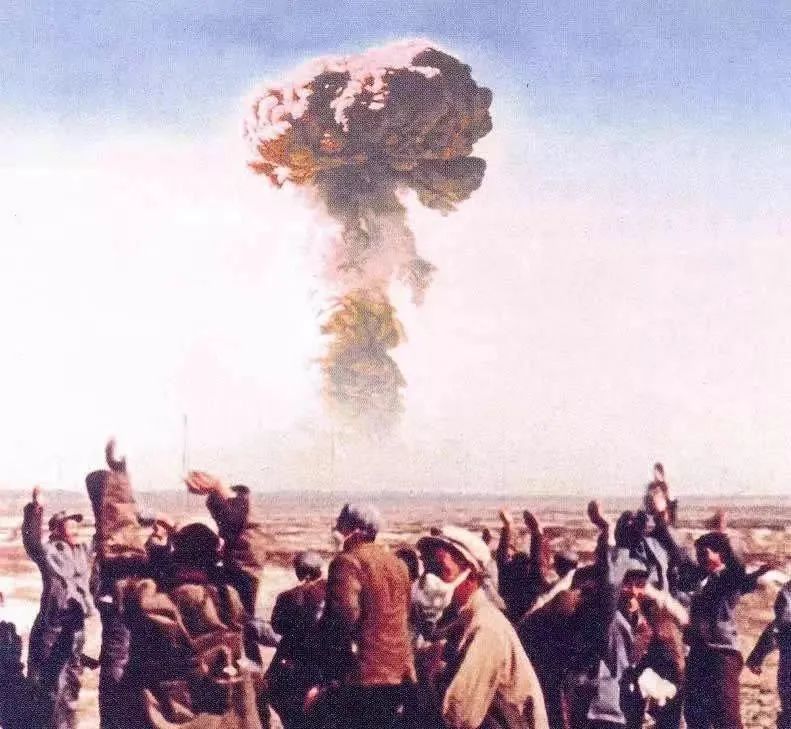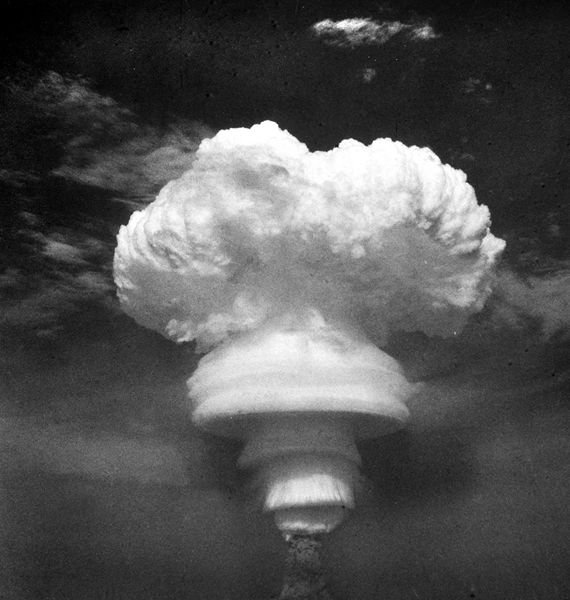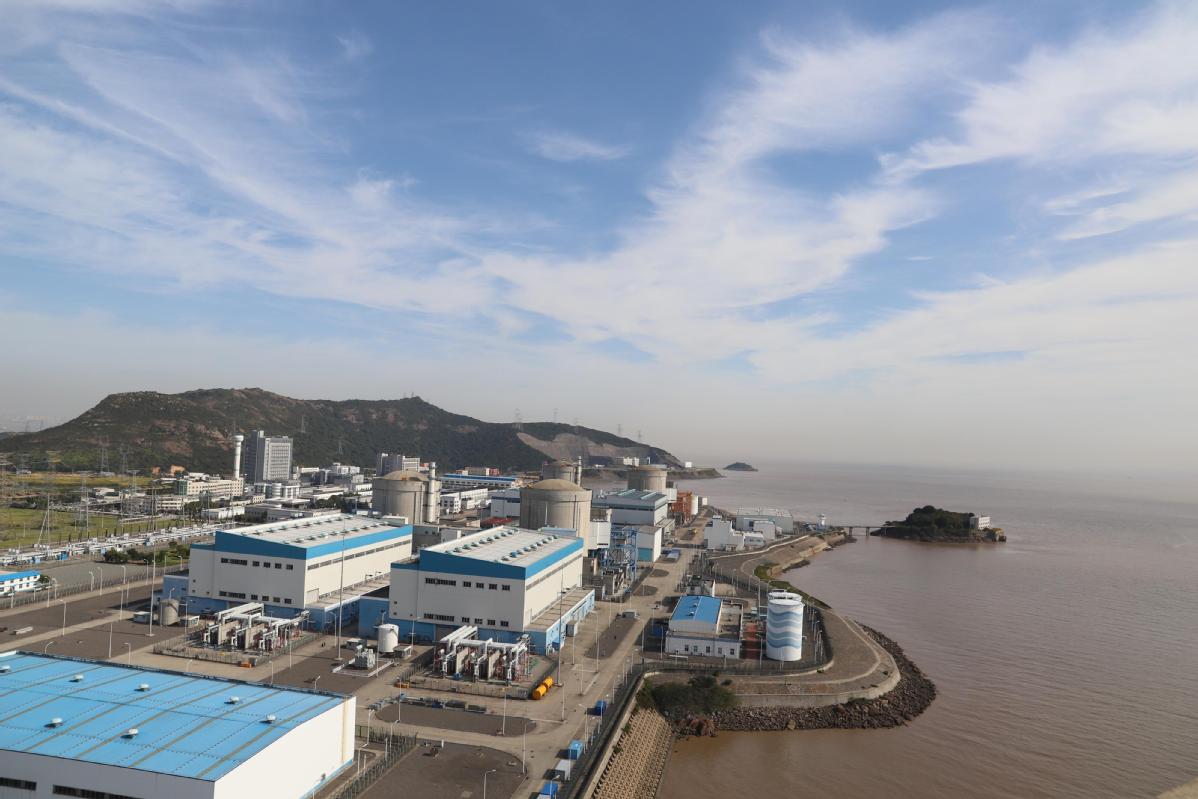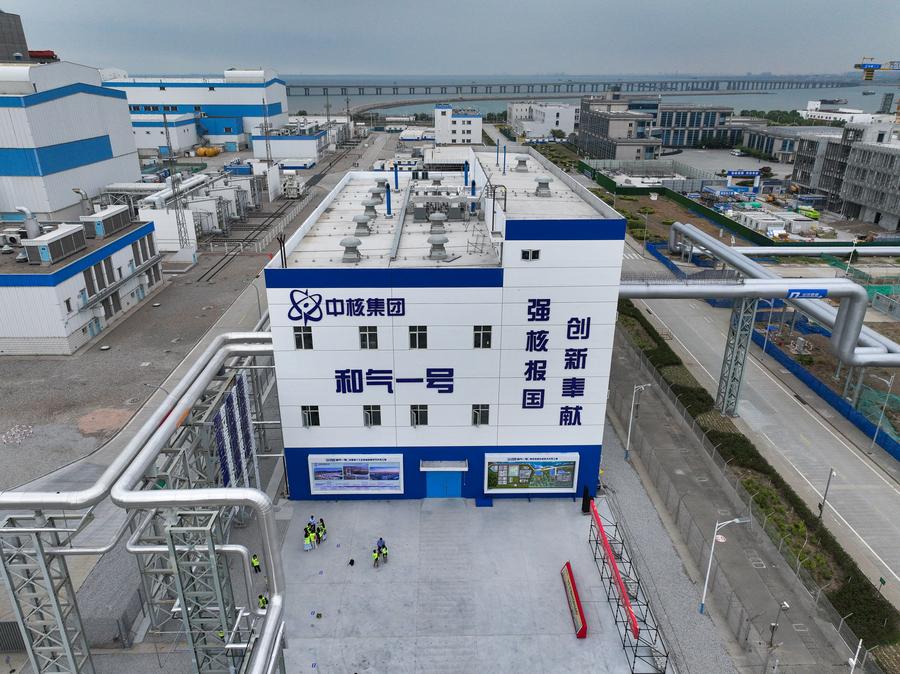Milestones in China's nuclear industry

China's first nuclear test
On Oct 16, 1964, a huge mushroom cloud rose from the Gobi Desert in Northwest China's Xinjiang Uygur autonomous region, symbolizing the successful explosion of China's first atomic bomb. This achievement positioned China as the fifth country in the world to possess nuclear weapons, following the United States, the former Soviet Union, the United Kingdom and France.

Detonation of China's first hydrogen bomb
On the morning of June 17, 1967, a fighter plane dropped a parachute over the the Lop Nur experimental base in the Xinjiang Uygur autonomous region. Accompanied by a massive explosion, a towering mushroom cloud ascended into the sky, marking the successful air-dropped detonation test of China's first hydrogen bomb. This test was another leap forward in China's nuclear weapon development after the successful explosion of its first atomic bomb, a milestone which took only 2 years and 8 months to achieve.
Launch of China's first nuclear-powered submarine
Starting from 1958, numerous Chinese researchers have dedicated themselves to the research and design of the nuclear-powered submarine. Following extensive trials and testing, China successfully launched its first nuclear-powered attack submarine on Dec 26, 1970, making China the fifth country in the world capable of autonomously researching, developing and possessing nuclear submarines.
The successful development of "the two nuclear weapons and the nuclear-powered submarine" has forged a strong "nuclear shield" for China, laying the foundation for the development of nuclear power and subsequently paving the way for the civilian use of nuclear energy.
Development of China's nuclear power and related technology

On Dec 15, 1991, China's self-designed Qinshan Nuclear Power Plant with a capacity of 300,000 kilowatts was successfully connected to the power grid, in Haiyan county of Jiaxing city, East China's Zhejiang province, ending the history of no nuclear power on the Chinese mainland, and marking a crucial leap forward in the country's peaceful utilization of nuclear energy.
Over the span of more than 30 years, China has progressively mastered core nuclear power technologies of various reactor types, including fast reactors, high-temperature gas-cooled reactors, low-temperature heating reactors, modular small-scale reactors and offshore floating reactors, enabling the nation to build nuclear power plants featuring a variety of primary reactor types.
Also, China boasts the capacity to simultaneously build more than 40 nuclear power units, according to a report on the development of China's nuclear power which was released by the China Nuclear Energy Association in 2023.

On Jan 30, 2021, a significant achievement was realized when the No 5 nuclear power unit — the first reactor using China's homegrown third-generation nuclear reactor technology Hualong One, commenced commercial operations in Fuqing, Fujian province, marking China's success in joining the front ranks in the field of third-generation nuclear power technology and becoming one of few countries to truly master independent third-generation nuclear power technology after the United States, France and Russia.
Currently, nuclear energy stands as a pivotal component of China's diverse energy supply system. Although nuclear power now accounts for less than 2 percent of the total installed capacity nationwide, it generates nearly 5 percent of the country's electricity.
China now has 102 nuclear power units either under operation or construction, with a total installed capacity of 113.13 million kW. This includes 56 nuclear power units under operation with a total installed capacity of 58.08 million kW and 46 of them under construction with a total installed capacity of 55.05 million kW.

Moreover, China's first industrial-use nuclear energy steam supply project, Heqi No 1, was completed and put into operation on June 19, 2024, at the Tianwan Nuclear Power Station in Jiangsu province, signifying a new field of nuclear energy application in China.
As one of the first "green and low-carbon advanced technology demonstration projects" in China, the Heqi No 1 project will not only support the green upgrade of traditional industries but will also inject strong momentum into the high-quality development of the regional economy.
